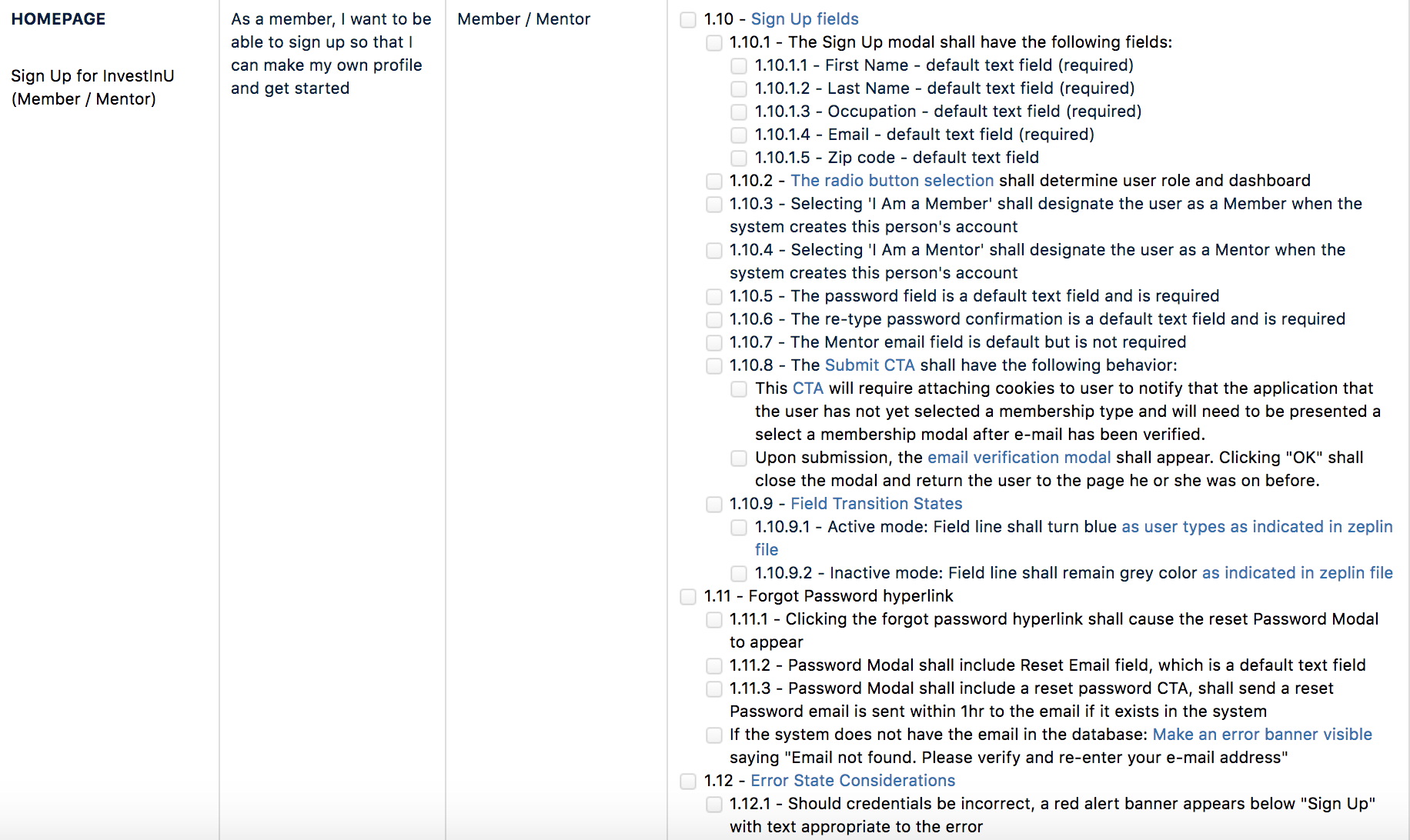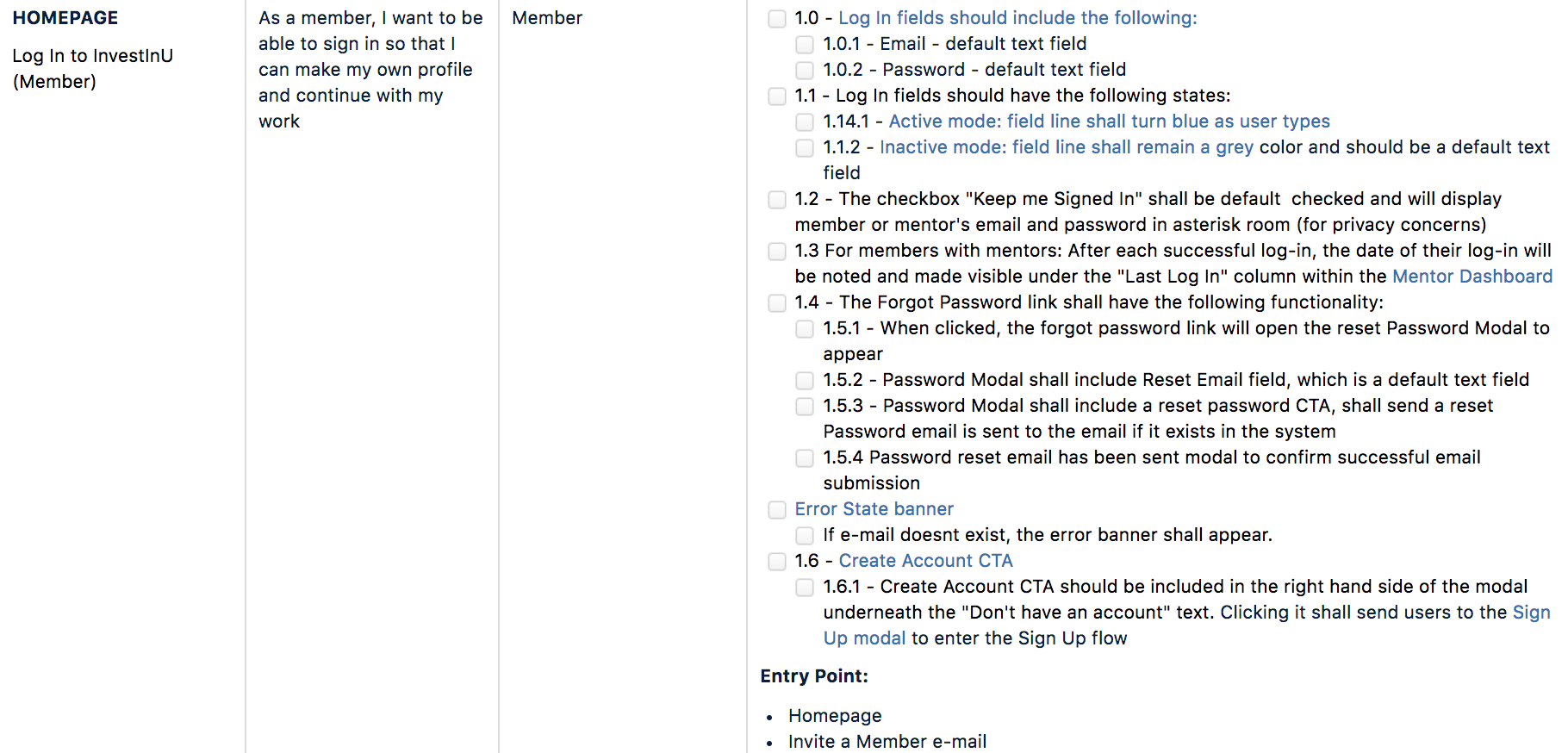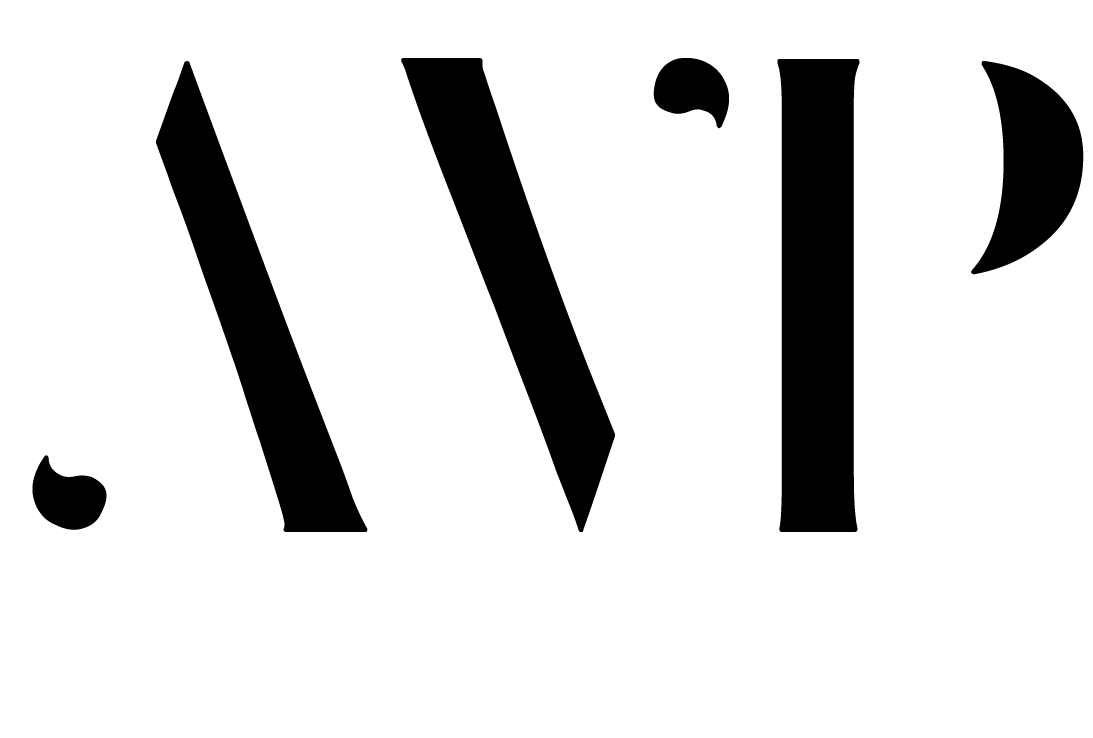Role: UX Strategist, IA, Content Strategist, product owner,
Project Brief:
The client is a local professor who is also a certified Clifton-Strengths finders coach and he had the vision of creating a product that would allow users to build self-assessment plans leveraging their strengths and applying it to their goals. The Clifton StrengthsFinder assessment was created under the leadership of educational psychologist Donald Clifton. He wanted to identify the skills of the best of the best of the best, and to capitalize on them. According to Gallup, "The Gallup Organization, widely known for its polls and employee selection research, developed numerous semi-structured interviews to identify talent that could be enhanced and used to pursue positive outcomes in work and school. In the 1990s, under the leadership of Donald O. Clifton, Gallup developed the CSF as an objective measure of personal talent that could be administered online in less than one hour." It identifies the areas where one (or team if being used in that context) have the greatest potential for building strength. It measures recurring patterns of thought, feeling, and behavior. Knowing this information is a starting point; Leadership Vision is then able to help individuals, teams and organizations leverage their Talents, and turn them into sustainable Strengths
Project Scope:
Invest In U is a web application tool that will assist any member to build and leverage from their themes to set and fulfill their goals in life. These goals may be related to career, relationships, personal etc. Invest In U's model involves weekly check-ins from the mentee to assess their progress to allow reflection over time with
the intention of leveraging natural strengths to tap into greatest capacity for success.
the intention of leveraging natural strengths to tap into greatest capacity for success.
Objective: To research the user needs in order to assess which digital experience would be most relevant that would result in generating brand awareness, building user base and purchase of memberships. As this is a relatively new concept, an MVP was decided on as a market test.
Tools:
Sketch, InVision, Zeplin, Stripe (payment), Confluence
My Introduction to CLifton
As kick-off to the project, the client wanted to get to know us as a team and our dynamic (very Coach-like of him) so he encouraged us take the Clifton Strengthsfinder test and we discussed our results. Ultimately, this helped me place myself in the users perspective to envision the ways in which I may want to improve my self in life, career, relationships etc.
INDUSTRY RESEARCH
SHOULD YOU USE AN APP TO HELP THAT CLIENT
1 in 5 Americans have a health-related app
allow therapists to maintain a better connection with their patients and improve their ability to track clients' symptoms and moods
San Francisco-based clinical psychologist Keely Kolmes, PsyD, says that many of her clients prefer apps to the paper-based tools that she's used in her practice for years, for recording thoughts and tracking moods.
"Apps help prompt my clients to log things like their mood or whether they exercised or drank alcohol or slept well, so that I can have an accurate picture of their week, as opposed to them trying to reconstruct things on paper the day before therapy or during therapy, which is much less reliable," she says.
More accessible, 24hrs a day/7 days a week
Mental Health Apps by NW University: https://intellicare.cbits.northwestern.edu/
Apps can also help clinicians gather data about their practice, says APA's director of legal and regulatory affairs, Stacey Larson, PsyD, JD. For example, several apps provide HIPAA-compliant note-taking (such as Insight Notes and Mobile Therapy) and can generate graphs or tables showing client improvement as well as areas that still needed to be worked on
HOW TECHNOLOGY-ENABLED 'SELVES-IMPROVEMENT' WILL DRIVE THE FUTURE OF PERSONAL PRODUCTIVITY
That is, providing digital tools, techniques and technologies that empower employees to craft high-performance versions of themselves — “selves” that are smarter, bolder, more creative, more persuasive and/or more empathic than one’s “typical” or “average” self
INDUSTRY THREATS AND OPPORTUNITIES
Consumers with high incomes will continue to seek out industry services
Competition increased as more life coaches entered the industry
Low barriers to entry will enable sole proprietors to enter the industry with little startup costs
INDUSTRY REPORT - INDUSTRY LOCATIONS CHAPTER
Although over half of life coaching is done remotely, operators in this fragmented industry still tend to locate in regions with large customer bases. Such regions include populous areas of the country that have a high level of business activity to further drive demand. As such, the Southeast contains more industry establishments than any other region. The region contains 25.6% of the nation’s population, by far the largest share of any region. Consequently, IBISWorld estimates that the Southeast contains about 29.2% of establishments. The West contains the second greatest share of industry establishments, with about 18.4%. This ranking corresponds to its share of the nation’s population, which is also the second greatest at 17.2%.
Revenue: $1bn
Annual Growth 12-17: 4.7%
Revenue: $1bn
Annual Growth 12-17: 4.7%
COMPETITORS
Talkspace
Remente
Coach.Me
Tilt365
16 Personalities
COMMON VALUE PROPOSITION AMONGST TECHNOLOGY
Accessibility and flexible communication to coach on your own time
Affordable rates
User and Mentor/Coach user flows - 2 entry points means 2 business models
Testimonial/Marketing of effectivity of methodology
Intuitive Progress Tracking and features to keep user engages and accountable to succeed
What I Need to Find Out
What the most strategic opportunity for Invest In U is (in an MVP) in order to attract an ambitious and motivated user base as well as have them commit to pursuing their goals with the help of a platform.
How I Found Out
I conducted industry research on the current and potential target market in order to make projections on user needs and motivations. I used competitive analysis to compare what other companies in the same industry lacked or capitalized on to apply to our MVP web application.
RESEARCH RESULTS
There are four main points that a successful self-help application needs to address in order meet user needs. I applied these 4 insights as pillars to the MVP's concept. Every design, development and user experience decision needed to be associated to either one or multiple of pillars.
COMPETITIVE ANALYSIS
Similarities:
- Dashboard interfaces to view and track user performance
-Mobile accessibility
-Access to a mentor
-Application of assessment and quizzes as a measure to quantify user performance
Missed opportunities:
-Some products do not let you choose your mentor
-Not all products are affiliated with a well-known personality assessments program
-Most apps are either goal-oriented or geared towards mental health not self-improvement
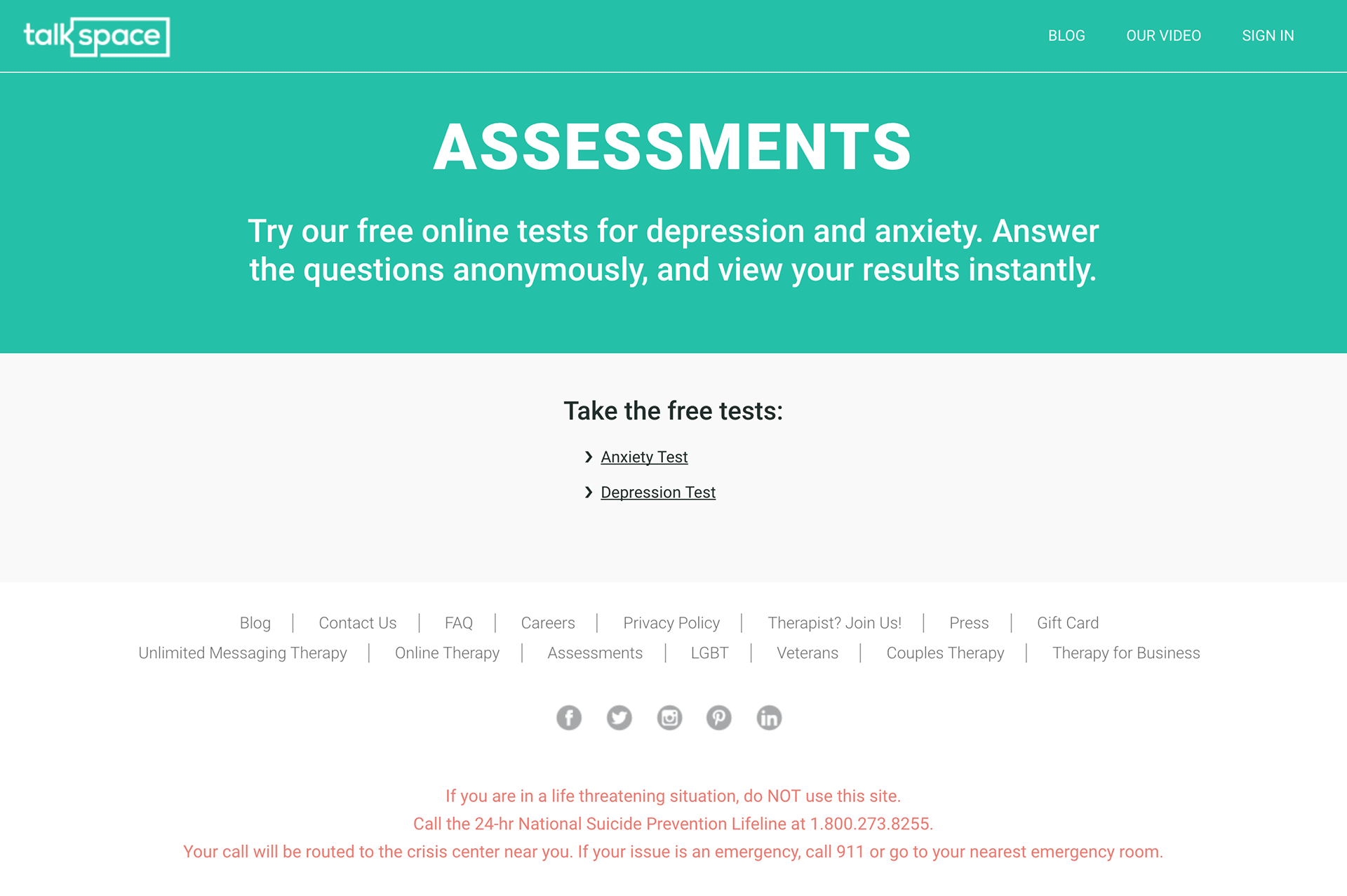


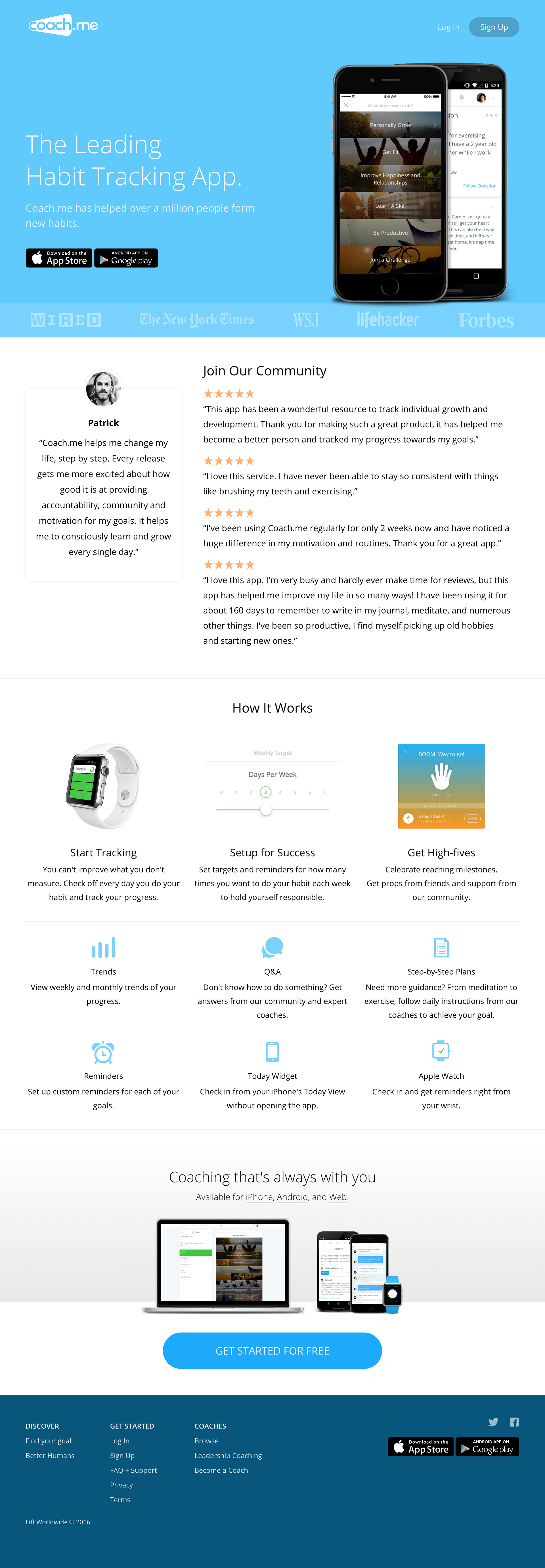


EMpathy mapping and mental models
Based on my research, I proposed to the client the opportunity to market the product to collegiate students because their motivations and needs align very well with the product's goals. Students are also in a unique position to have a shorter learning curve to adapt to the technology, are limited by finances but require the most guidance as they are in a period in their careers and lives to where understanding one's self is detrimental to making the right life decisions. I included my insights below:
PSYCHOGRAPHICS OF THE COLLEGE STUDENT: 2017
About 38% of undergraduate students are older than 25, about 58% are working, and more than one-quarter are parenting, according to data from the Lumina Foundation
Balancing work, school and her family responsibilities has been one of the biggest challenges of going to college
College affordability poses challenge to nontraditional students
About 11% of student loans overall are delinquent, according to the Federal Reserve Bank of New York
Older students are increasingly attractive to colleges
product road mapping
With all the information, I have gathered until now, I was able to start building the MVP concept and then shaved it down to the essentials with the main goal of enticing and on-boarding a user base. I hosted a workshop with the client to discuss his plans for Go-To-Market strategies and intended Business Models (ie marketing efforts, discussing membership price points, user roles etc)
Here, I demonstrated strong client communication skills via my presentation of what the MVP should entail. IT required me pitching and dissecting my ideas to a non-technical audience.


results
The client and I had mixed emotions when building the business model.
Client's Proposals:
- Wanted the mentors to be the source of marketing - to rely on their word of mouth to encourage mentees to sign up.
- Wanted to loosely define mentor and mentee roles to extend it to any individual (rather than being a licensed professional).
- To offer a lifetime membership in which after all assessment models were completed, however, the MVP was limited in the initial content, therefore, there was no real value to offer after a few months.
- Lacked content strategy and wanted to leverage tactics from his Clifton Coach Guide
My Rebuttals:
- Most other products in the competitive analysis use the credentials and expertise of their professional coaching and mentor network as an incentive. These products also serve as a platform for the professionals to run their businesses and build clientele, as a result it is an income stream for them. The client's vision doesn't profit share with the mentors so they have no incentive.
- If inviting any individual that you highly respect to become your mentor on the platform is an option, it impacts the product's value. By not limiting or vetting those who take on the mentor role, it doesn't not give the confidence that the user will get expert guidance or support, just someone they trust to hold them accountable on their goals.
- I feel there should be either no memberships prices or a very small price in order entice casting a wide audience net and lowering the barrier of entry. This way, we welcome more data and evaluate how the platform is being used, what worked well, what needs improvements. A key to reiterations.
- I argued that the Clifton Strengthsfinder assessment was a paid product and so how was his license in becoming an official Coach. We would violate copyright infringement if we applied their content. I vouched for our product to be as original as possible and that starts with a unique mission statement and value proposition.
- I proposed explicit copy to explain that in order to begin using Invest In You, one needed to already have taken the Clifton Strengthsfinder assessment which is a separate costs but also pre-requisite.
The Compromise:
- Offering one membership to students at a low price point
- Allowing no limitations on mentors credentials to encourage a large user base. I was approved a page in which I content would be geared to detailing the responsibilities and expectations of a mentor
- I pushed for a meeting with the Clifton's content product team to discuss what content can be appropriately leveraged and all I was approved for were the definitions and actual themes nomenclature.
- An on-boarding flow was clearly necessary to explicitly outline the pre-requisites and a simple questionnaire to get to know the user.
- I agreed to work with the client on building a content strategy that would result in original content and coming up with use cases for applying the Clifton's themes and definitions.
SITE MAP
Based on the defined needs and goals from interviews with users of the target audience, I have gathered the following priorities to frame the site's Navigation. In an effort to meet the two main business goals of increasing sales and honing in on a target audience.
Please see diagram below.
Site Map by Ana V Peralta
USER FLOWS
USER FLOW #1
Rough visual concept of the purchasing a membership
USER FLOW #2
Outlines the weekly user flow that is expected when needing to complete a weekly assessment and document the latest progress
USER FLOW #3
Outlines the first-time on-boarding process which is required when accessing one's dashboard for the first time

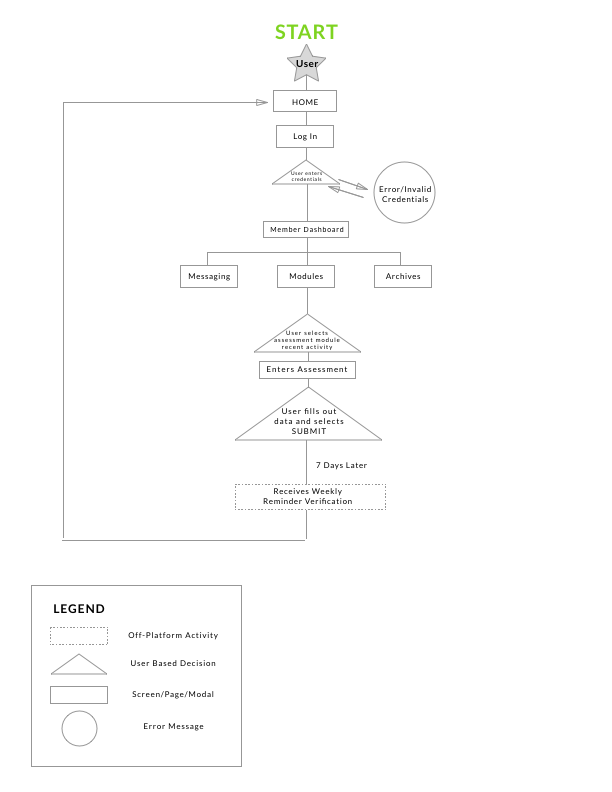
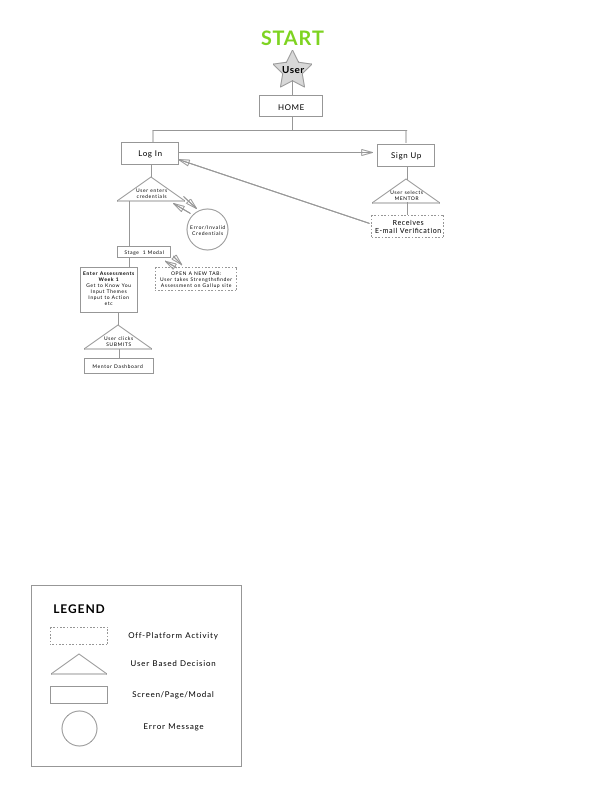
WIREFRAMES
My goal was to design a website was conducive to logging, tracking and information. See the evolution below:
Member Dashboard
I made sure that all submitted work was revisable (archived) therefore a member user can see how far they've come form day one. Seeing as the expectation is to log in weekly (and eventually monthly), I wanted to reduce as many interruptions as possible and help the user jump back in, therefore I planned widgets and components that featured notifications that would draw the users's attention to items that needed immediate action. The progress tracker is to assist with keeping morale high and motivation going by making the finish line visible'. The user profile also displays the Themes as a constant reminder their talents and identity. The coolest feature is the communication modal, this allows for further in-depth discussions on the topics reviewed within the weekly assessments.
Mentor Dashboard
The mentor dashboard is meant to resemble a roster ad handle lots of information. It is scalable, therefore, if a mentor decides to mentor more members, they will feel in control with making themselves available to more than one member. It's focus is on statuses and notifications, this way, they address any delayed activity and helps members stay the course to completion. The messaging feature will allow them to have contact and provide guidance. By displaying the mentor's theme as public information, I hope that this would spark discussions around strengths and talents and lead to users finding commonalities and bond as a result. The themes also spark opportunities to learn about the Clifton program, learn the content and avidly use the results from their assessment.
Homepage
As this product is new and unique to the space, it needs a page for marketing purposes such as explaining the value and its mission. This page is also essential for SEO purposes to drive organic traffic.


Image above was the 'idea' that the client provided for the weekly self-assessments
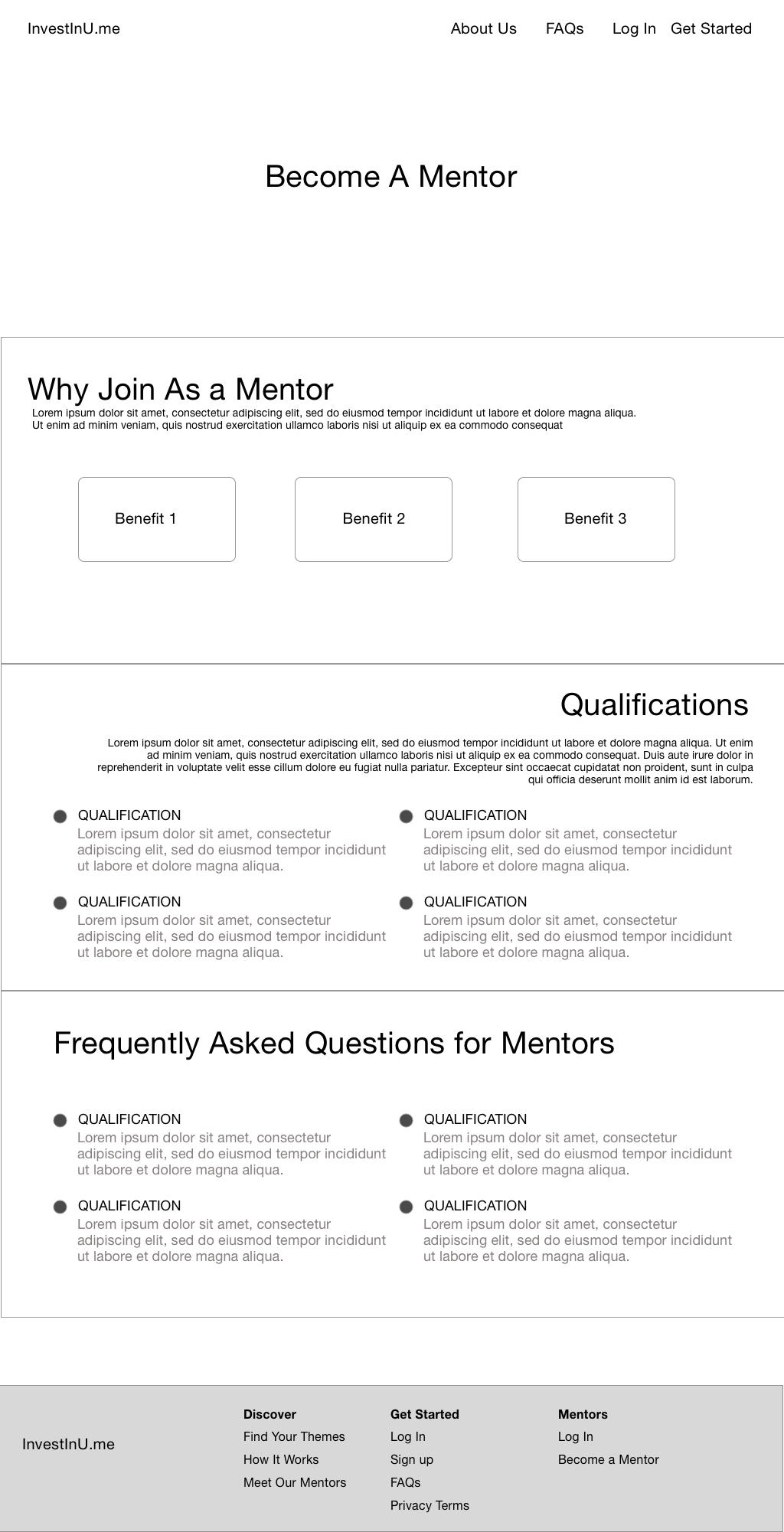


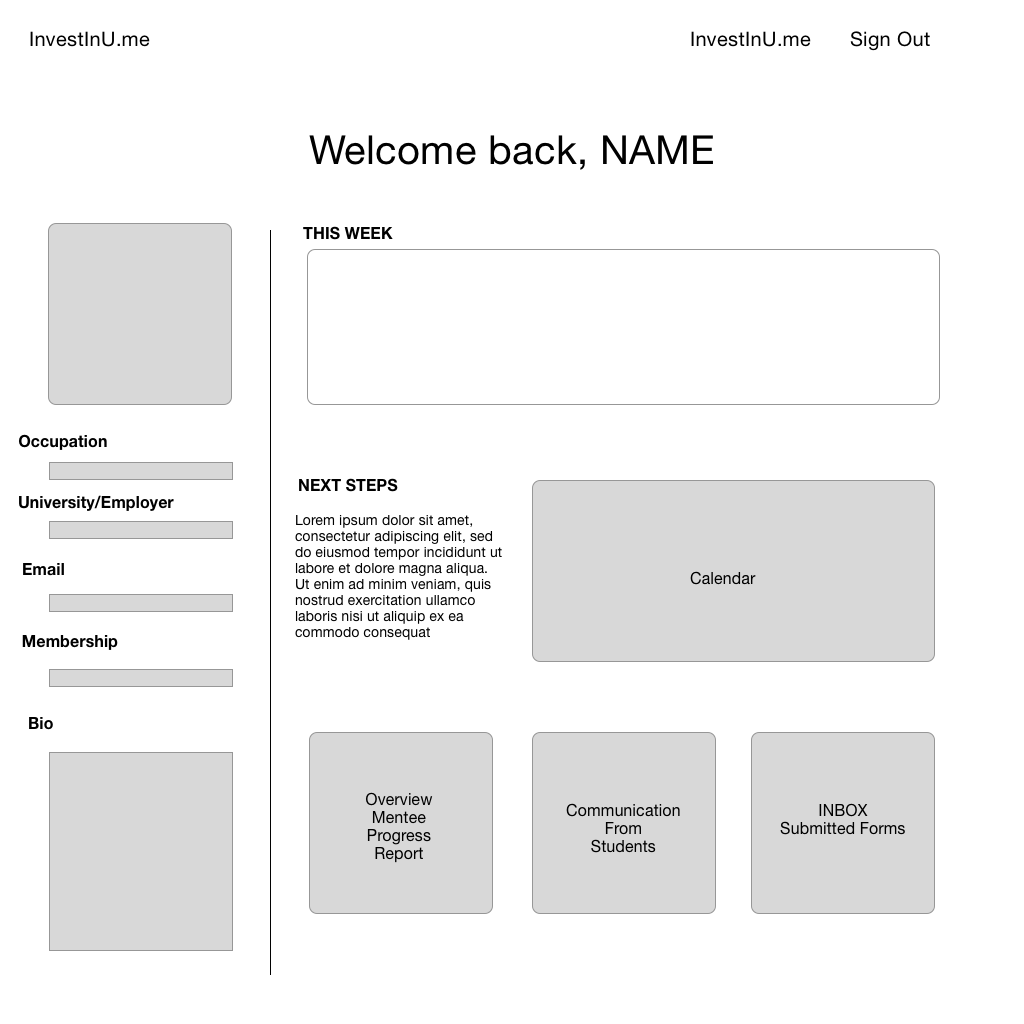



END RESULT Designs

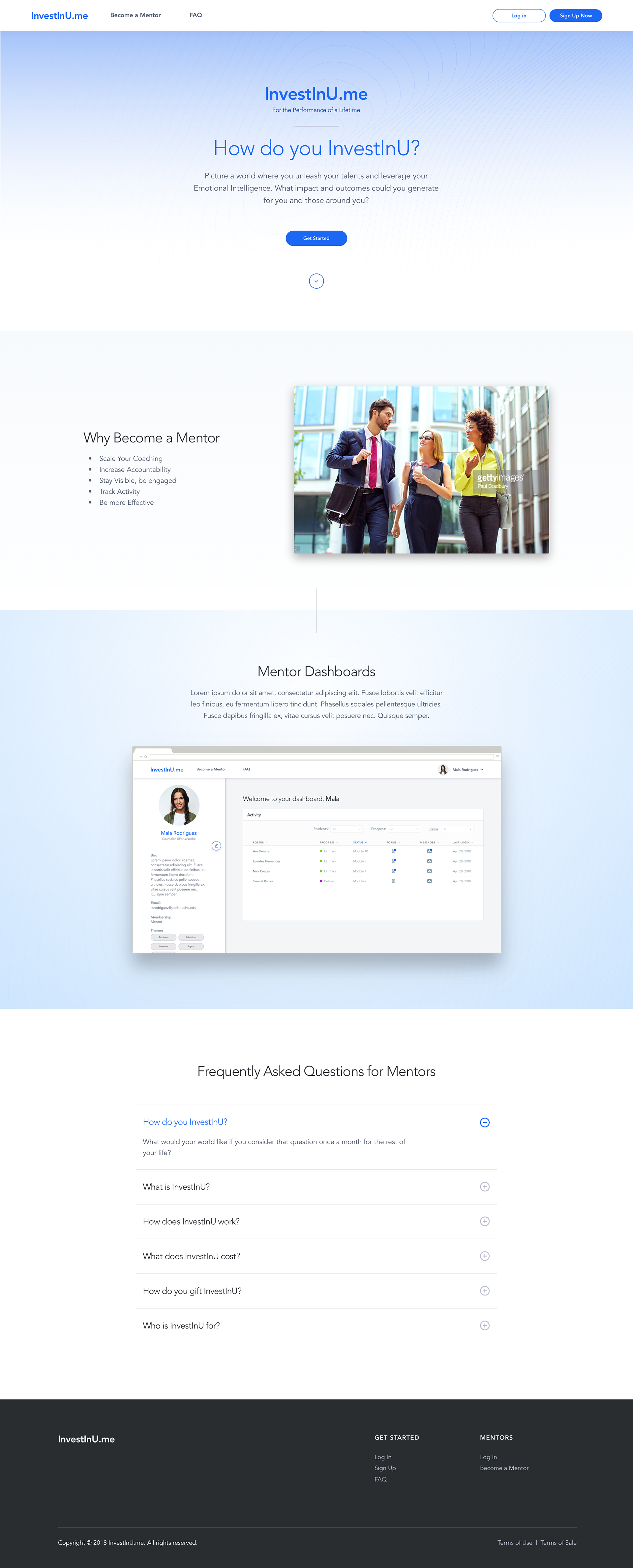
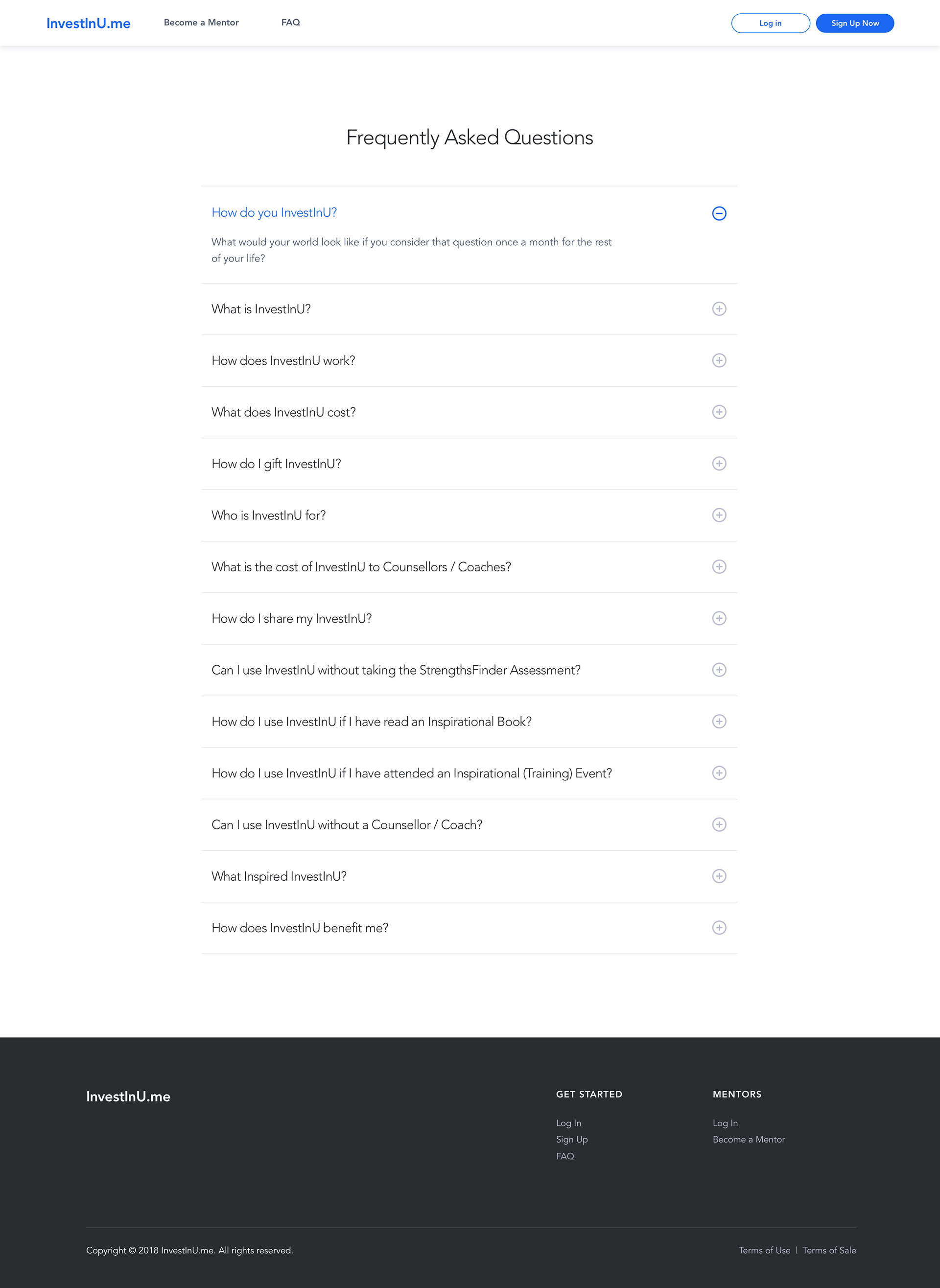
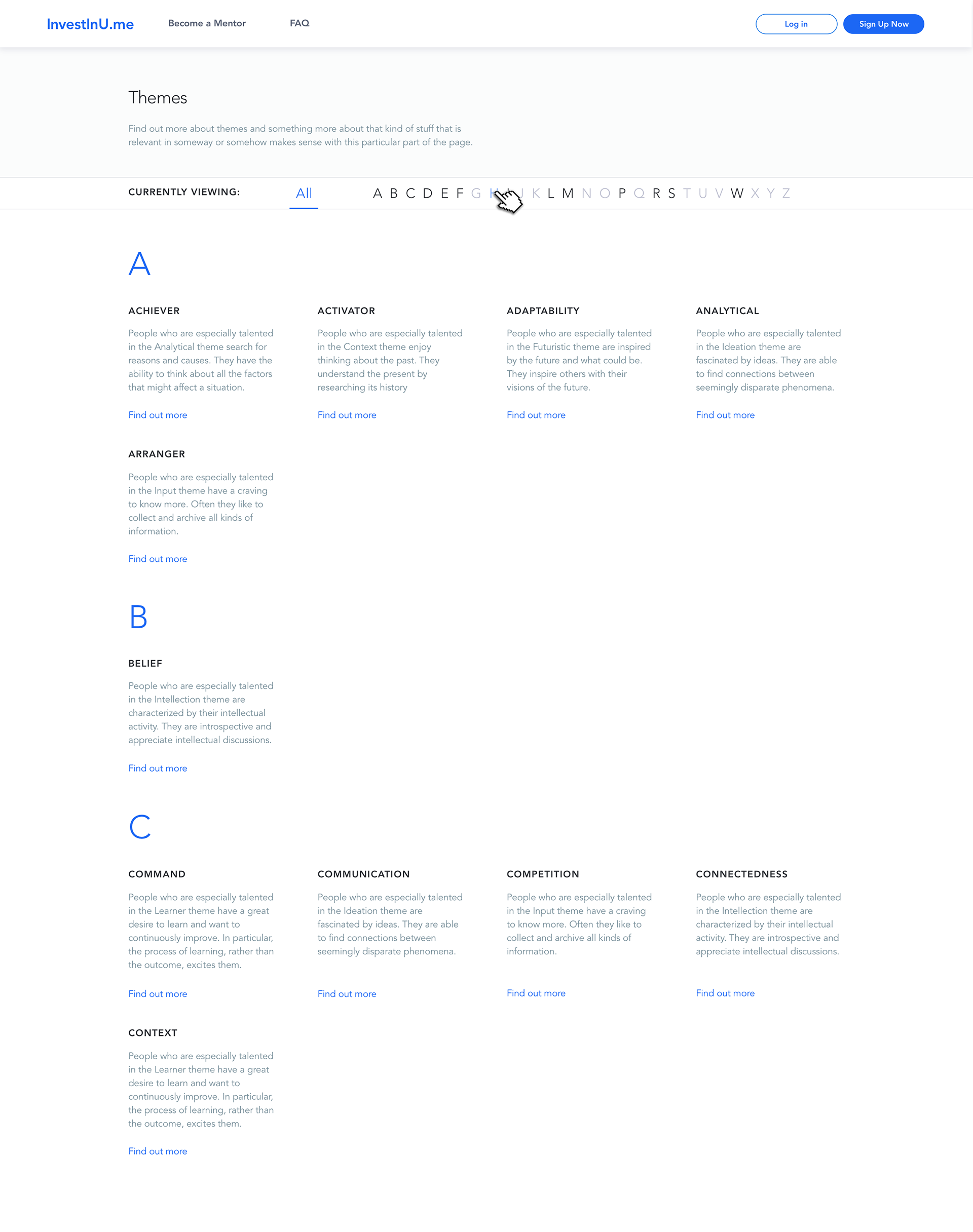
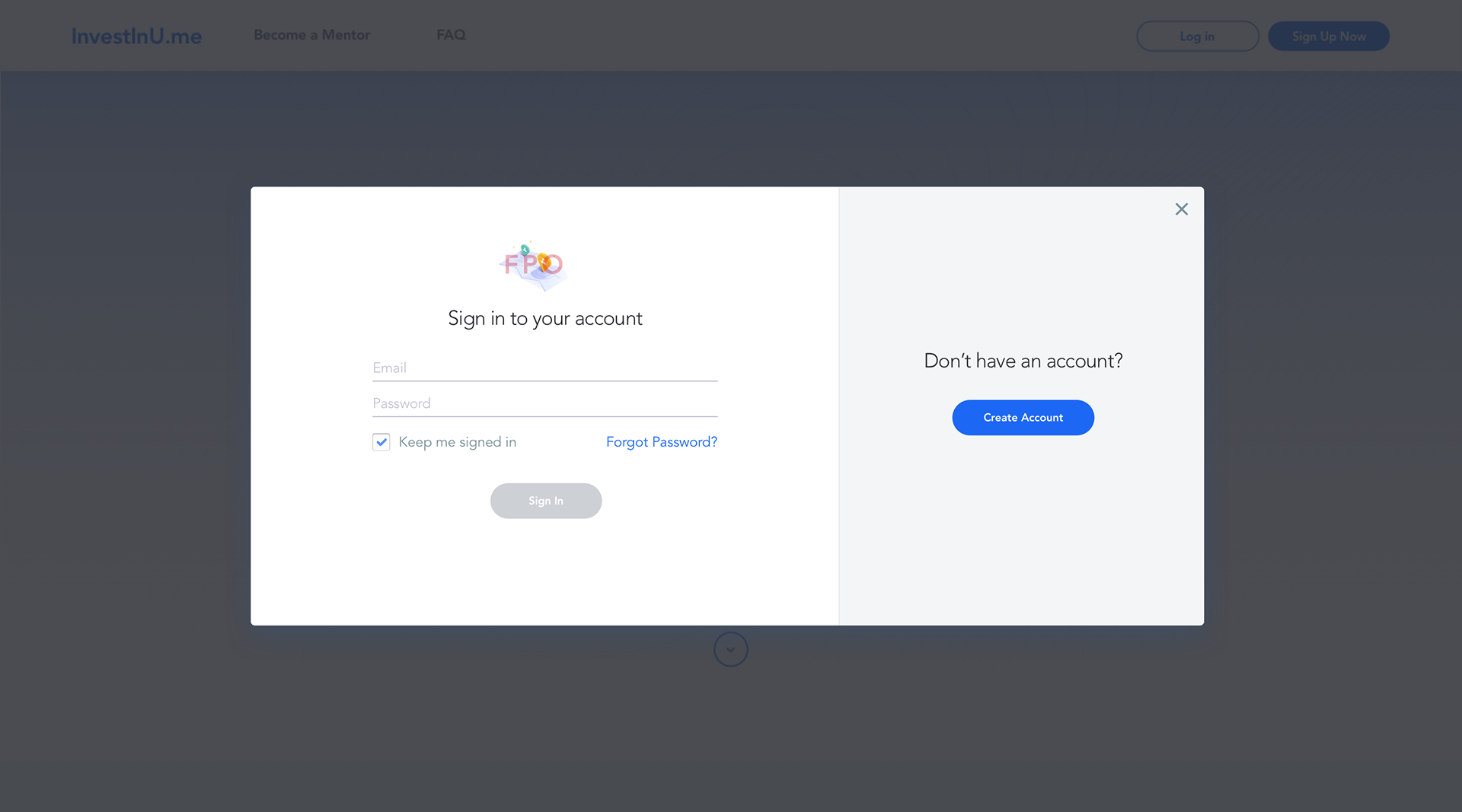
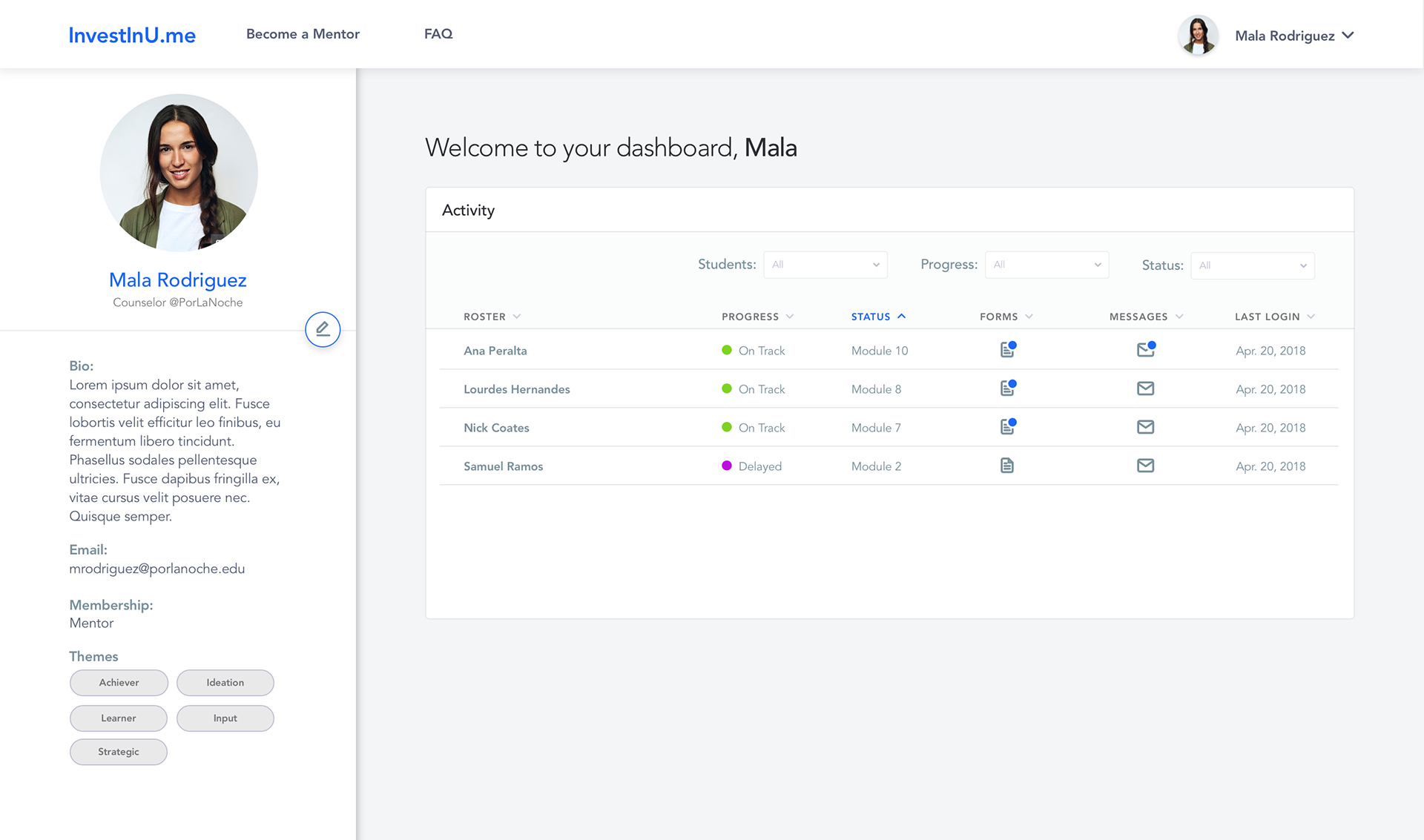

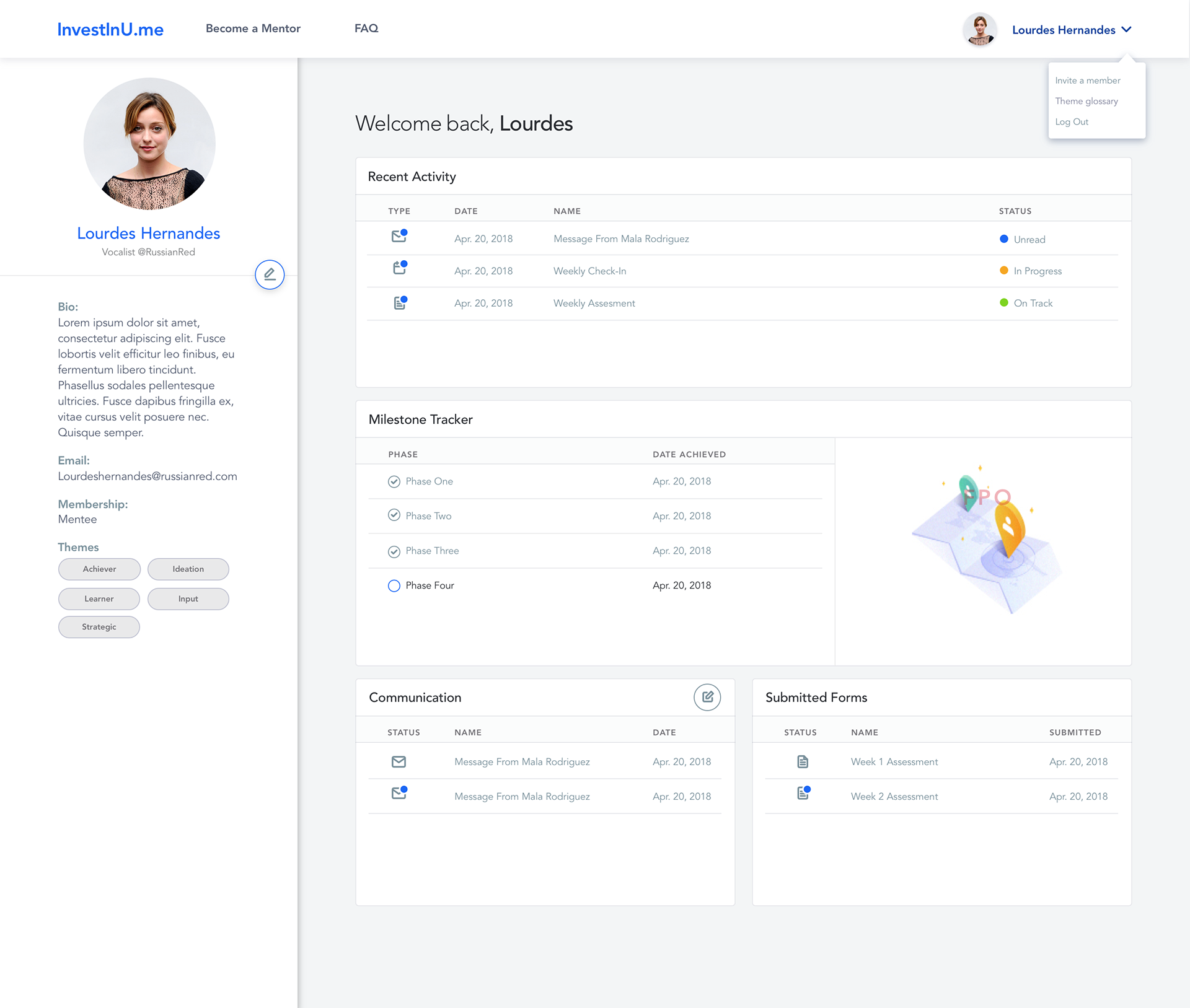
All design work was completed by the team UI Product Designer
building content strategy
The client was not a savvy copywriter but I was able to create a presentation that would simplify the process into bits that would help him think about the message he wishes to deliver to his users. Once he was clear on this, I was able to make UX recommendations that would best satisfy these goals while being quantifiable to ensure that all user behavior could be measured and determined successful or not.
Challenges:
Due to budget constraints on the MVP, it was decided that many pages needed to be hardcoded in order to prioritize the features and functionality located in the assessment module, the dashboard activity, communication modals and email notifications. This coerced us to ensure that any content be valuable and intriguing.
Snippets of my work below:

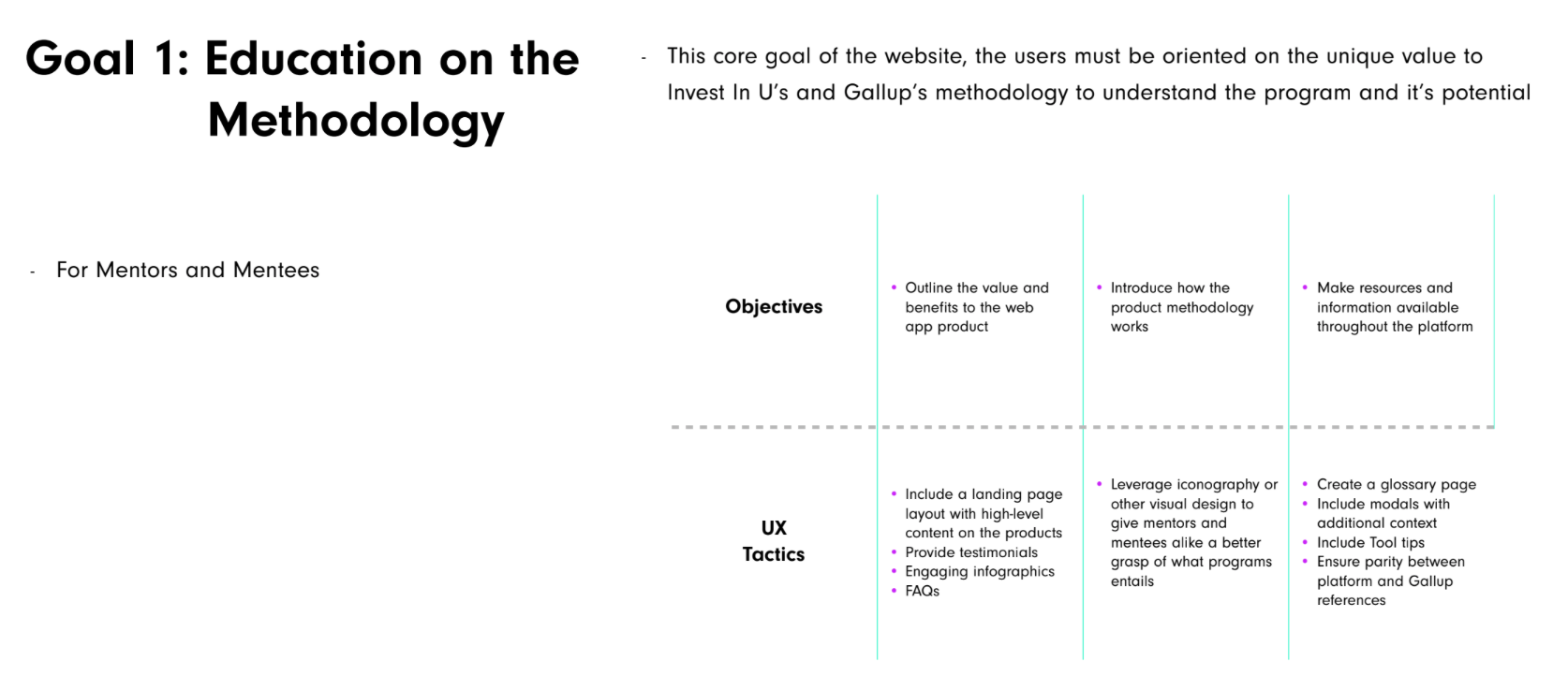
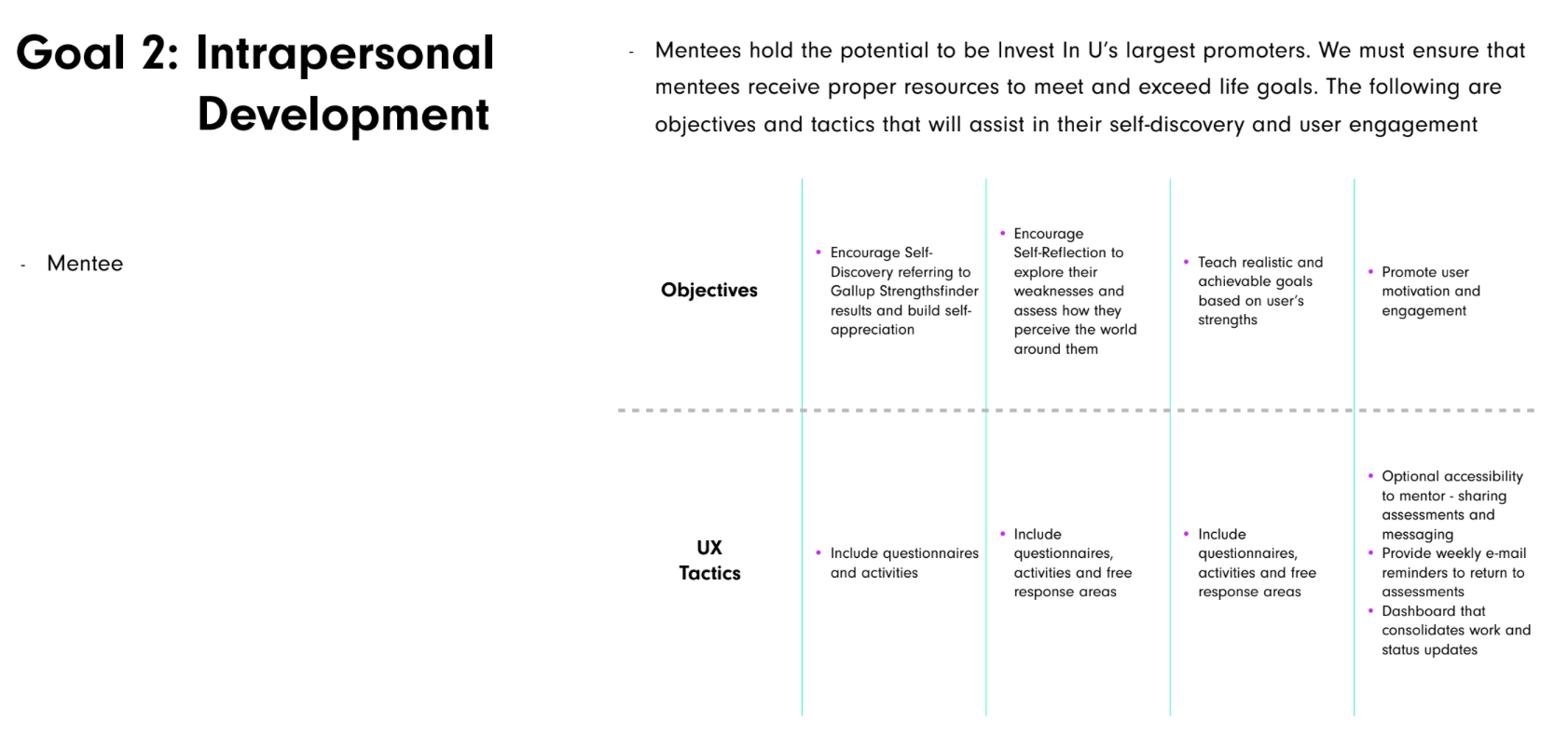
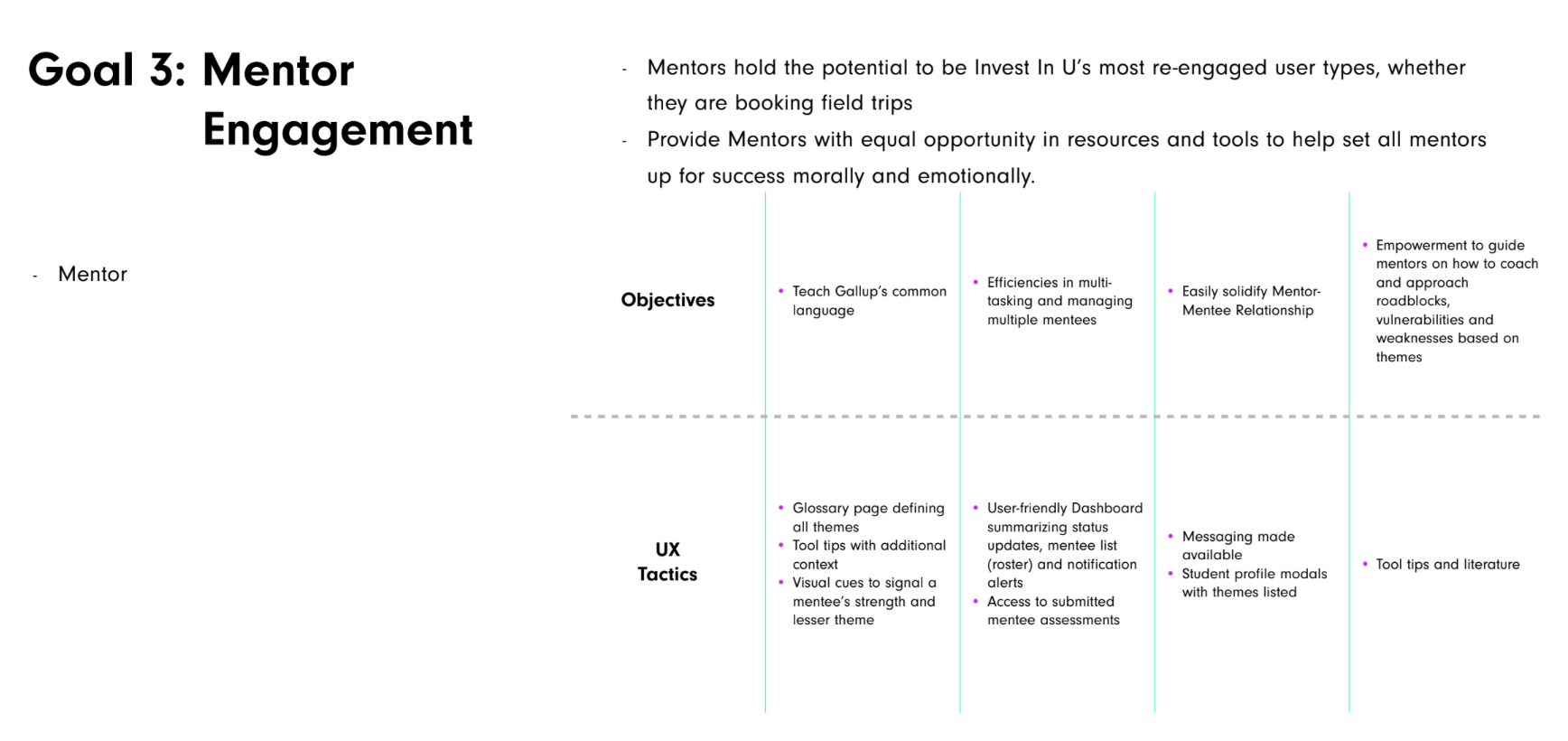


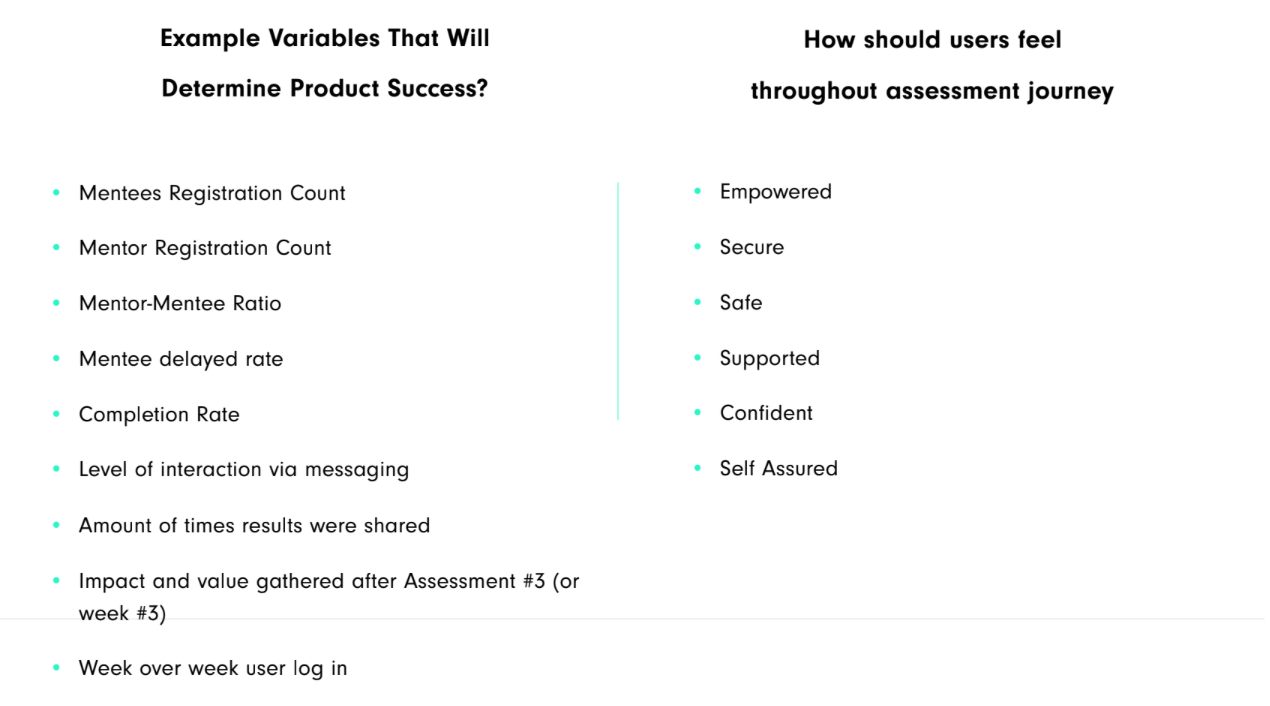
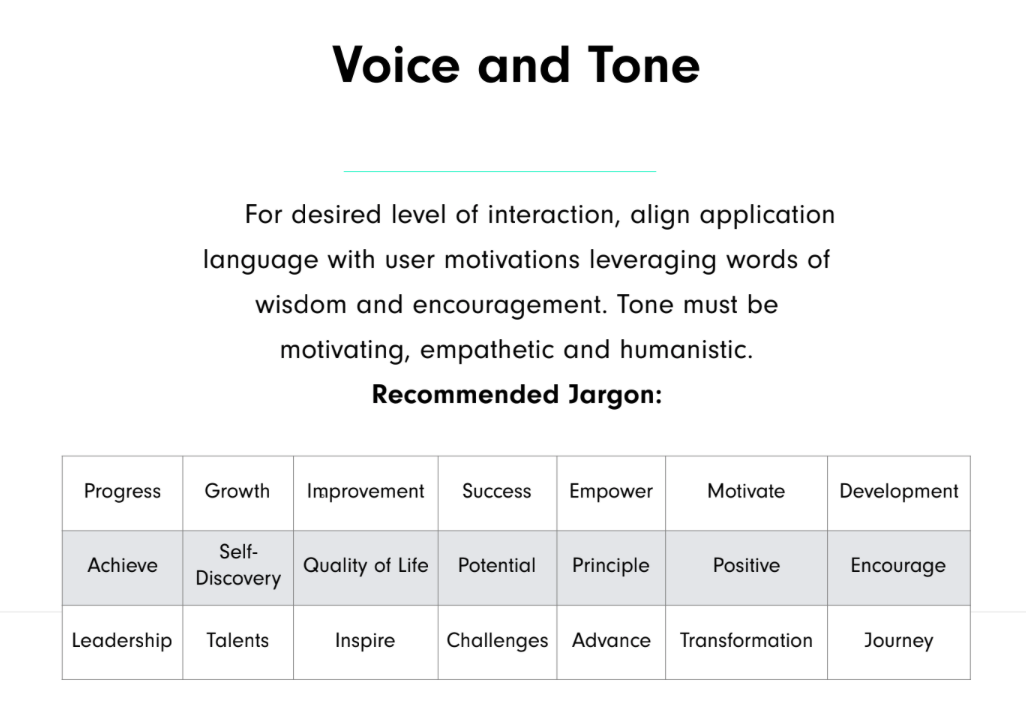

An interesting that I want to point out as well is that the advice I provided to the client (a licensed Clifton coach), about placing chronological priority and value in the assessments to build user's confidence and instill integrity in the brand's value. In conclusion, I expressed that a habit takes approximately 21 days to instill (~3 weeks) and approximately 40 days to make a lifestyle impact (~6 weeks). Hence, I suggested that the assessments from week 1-6 be insightful, impactful and thought-provoking. Placing mediocre content first has the potential of losing user engagement, cause drop-off rates and membership cancellations.
functional requirements
Only snippets of my functional requirements documentation can be show. The below display my use of epics, user stories and instructions on Dev expectations.
